This article is more than 5 years old.
To borrow and slightly change a line from Ben Stiller in Meet the Parents, I’d say this workshop was “strong… to very strong.” The Preservation Institute is taught by top specialists from the Library of Congress. The Library of Congress brought out some of their big guns for this week-long workshop. The sessions were held in the James Madison Building, with tours to the Jefferson and Adams Buildings as well.
The institute is geared towards federal institutions, but there were non-federal libraries there as well (University of Cincinnati and Cincinnati Public). The first day was great. Diane van der Reyden, Director of Preservation of the Library of Congress discussed preservation management. Some of her more interesting points were that the Library of Congress is still working on digitization solutions and have no definitive method. What!? That makes me feel a lot better as we at ZSR still try to improve digitization and incorporate best practices as we do this activity. Diane said the LOC doesn’t particularly like “machine dependent” formats-because without a specific machine, access in the future might be difficult. They have, however come up with some ingenious ways around this problem. IRENE is a machine which reads broken or damaged vinyl, acetate discs or wax cylinders and coverts this into an image which can then be converted into sound.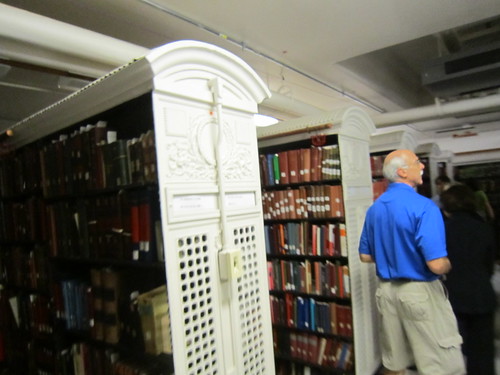
We also had presentations on pest controls, the environment, and disaster recovery from Nancy Lev-Alexander and Ben Bahlmann from the Preventive Conservation section and along the way, we got a tour of the LOC stacks (crowded with book trucks and books on the floor) and a balcony view of the circular LOC Reading Room. The Library of Congress has the same problems ZSR has: leaky pipes and a faulty HVAC system. Day one finished with a hands on disaster recovery exercise with Alan Haley, Senior Rare Books Conservator and Andrew Robb, coordinator of the LOC’s Emergency Response Team.
Day two featured a group of presentations on collections care, library binding, fundraising and exhibits.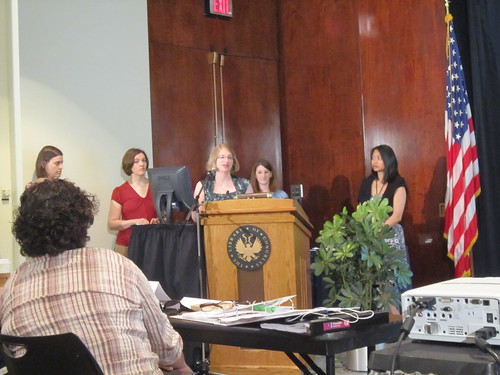 We got a behind the scenes look at the Collections Care lab and various enclosures-such as one for a piggy bank from Lexington NC. A new Civil War exhibit called The Last Full Measure: Civil War Photographs (http://myloc.gov/exhibitions/civilwarphotographs/pages/default.aspx) features hundreds of ambrotypes and tintypes of soldiers. The exhibit is very poignant and has the feel of a shrine. An exhibit specialist described mounting The Last Full Measure and showed us samples of book cradles and document mounts we could make ourselves.
We got a behind the scenes look at the Collections Care lab and various enclosures-such as one for a piggy bank from Lexington NC. A new Civil War exhibit called The Last Full Measure: Civil War Photographs (http://myloc.gov/exhibitions/civilwarphotographs/pages/default.aspx) features hundreds of ambrotypes and tintypes of soldiers. The exhibit is very poignant and has the feel of a shrine. An exhibit specialist described mounting The Last Full Measure and showed us samples of book cradles and document mounts we could make ourselves.
Day three saw us tackling digitization. We began with a presentation from the managers of the LOC remote storage facility at Fort Meade, Maryland. They have about six high bay facilities-each larger than ZSR’s one. We followed with a visit to the LOC Internet Archive project where they have 10 Scribe book scanners churning out digital copies of pre-1922 titles from their general collections.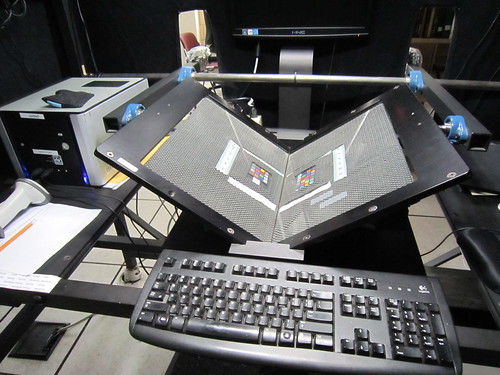 So far, they’ve scanned over 93,000 titles. It was an amazing operation to see. They confirmed that standards for resolution are in flux, something we’ve begun to realize at ZSR. They’ve abandoned using uncompressed TIFF files ( a heresy they admitted, but they insist it is a good heresy) in favor of RAW files which they convert to the jpg2000 format. In the afternoon, we had presentations about Rare Book Conservation and had a visit to their lab where we saw samples of supported (case bound) and unsupported (Ethiopian) binding styles, leaf casting and numerous other unique treatments.
So far, they’ve scanned over 93,000 titles. It was an amazing operation to see. They confirmed that standards for resolution are in flux, something we’ve begun to realize at ZSR. They’ve abandoned using uncompressed TIFF files ( a heresy they admitted, but they insist it is a good heresy) in favor of RAW files which they convert to the jpg2000 format. In the afternoon, we had presentations about Rare Book Conservation and had a visit to their lab where we saw samples of supported (case bound) and unsupported (Ethiopian) binding styles, leaf casting and numerous other unique treatments.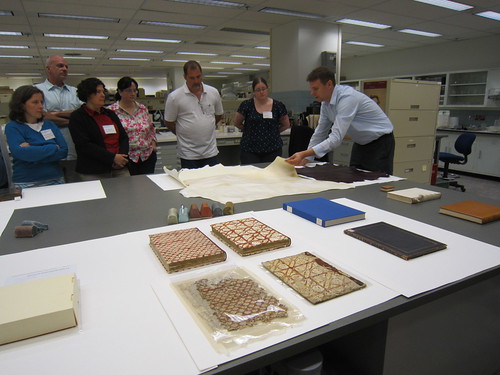
Day four was focused on paper and photographic conservation. We heard a presentation from Susan Peckham, Paper Conservator in the Conservation Division. Susan discussed paper history, paper composition, sizing, inks and printing methods. Susan also described problems with paper based collections such as foxing, light damage, ink burn-through, and the “inherent vice” of the wood pulp papers manufactured from 1850-1900. We also heard Dana Hemmenway, Senior Photographic Conservator. Dana described the structure of photographs, a history of photo types( daguerreotypes, ambrotypes, tintypes and paper photographic prints). She had examples of paper photo prints as well: salted paper prints, albumen prints, collodian, and silver gelatin prints. We also discussed their hazards and inherent problems over time. In the afternoon, both Susan and Dana held problem-solving sesions in the paper lab.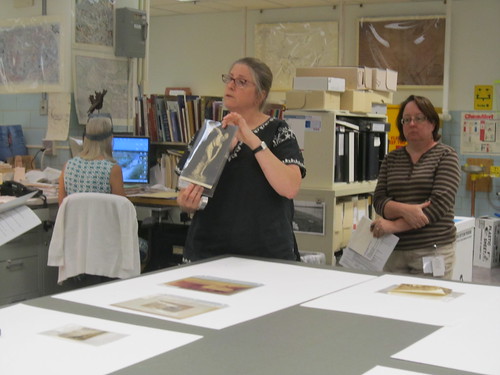
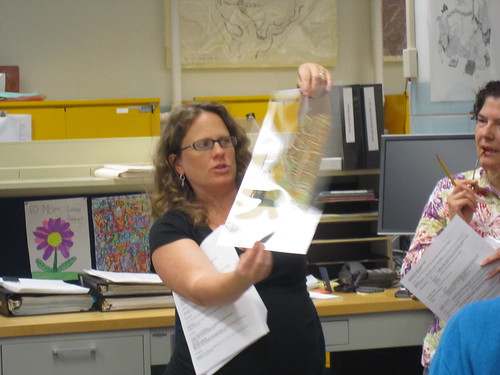
During the paper session, I was at a station with a 1780 letter written to George Washington. I was amazed at it’s great condition (which had been prolonged by a Library of Congress repair a hundred years ago called “silking”).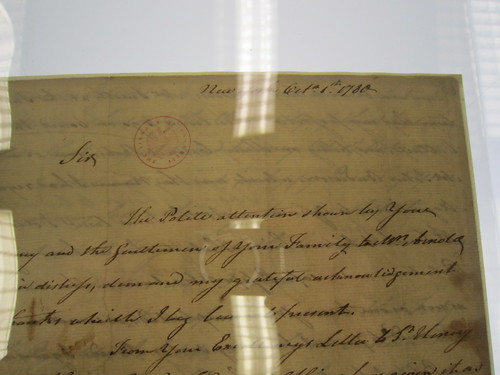
The final day I heard a talk on Digital Preservation from Leslie Johnston, Chief of Repository Development at LOC. Leslie defined digital preservation as “the broad range of activities meant to extend the usable life of machine-readable computer files.” Leslie was quick to point out the different between digitization-an activity primarily focused on access-and digital preservation. She made the pitch to replicate files in geographically dispersed locations, and on different storage media and systems in order to have the best chance for these files to survive. Leslie was all business. They use Jhove in the scanning and preservation of files by using format validation. Leslie also outlined how the University of Maryland is spearheading an area called “digital forensics” at their center which insures the security of digital materials that are transmitted. Matthew Barton from the Packard Campus of the National Audio-Visual Conservation Center in Culpepper, Va spoke on audio and sound preservation. Matthew’s presentation was delightful in describing their attempts to conserve audio recordings on was cylinders, lacquer discs, wire recordings, tape recordings and digital audio tape.
Amy Gailick, also from the Packard Campus, presented on moving image preservation and care. She described the film types and the very advanced cold storage area at the Packard Campus in Culpepper, VA. The have storage areas for some film materials at are held at 25 degrees.
In the afternoon, I met the closest thing to a Preservation Rock Star there is: Dr. Frenella France. Dr. France uses hyper-spectral imaging to examine documents and highlight early versions or corrections.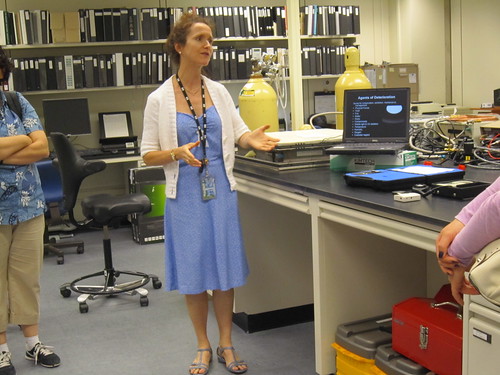 She has isolated a change Thomas Jefferson made to the rough draft of the Declaration of Independence and many other discoveries, such as Abraham Lincoln’s thumbprint on the Gettysburg Address. We also got a tour of the mass deacidification unit.
She has isolated a change Thomas Jefferson made to the rough draft of the Declaration of Independence and many other discoveries, such as Abraham Lincoln’s thumbprint on the Gettysburg Address. We also got a tour of the mass deacidification unit. 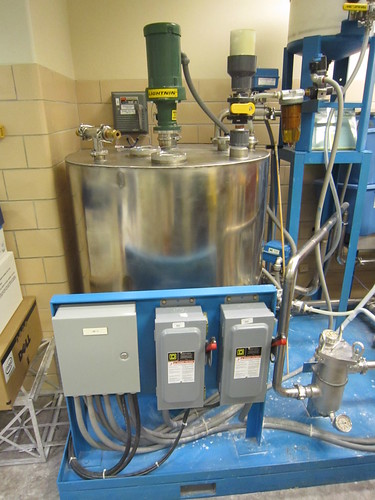 This unit takes acidic books and ‘washes’ them in an alkaline solution which neutralizes the acidic materials in the paper. They were washing comic books the day we were there! As we were leaving the lab, we paused in the hallway by a bunch of old card catalog units. I glanced down and recognized a familiar last name…WOW!
This unit takes acidic books and ‘washes’ them in an alkaline solution which neutralizes the acidic materials in the paper. They were washing comic books the day we were there! As we were leaving the lab, we paused in the hallway by a bunch of old card catalog units. I glanced down and recognized a familiar last name…WOW!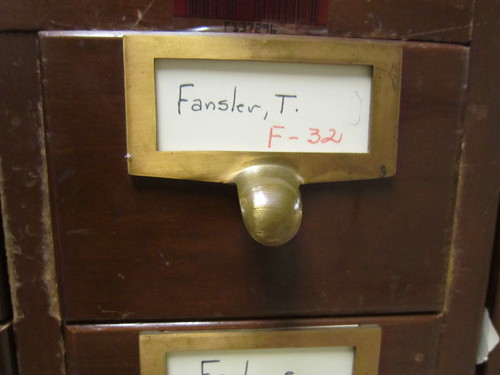
One thing I was in awe of was the beauty of the Jefferson Building. Every inch is covered with hand-painted niches, tiled vaults, coffers with gold leaf, stained glass, sculpture and even WPA paintings.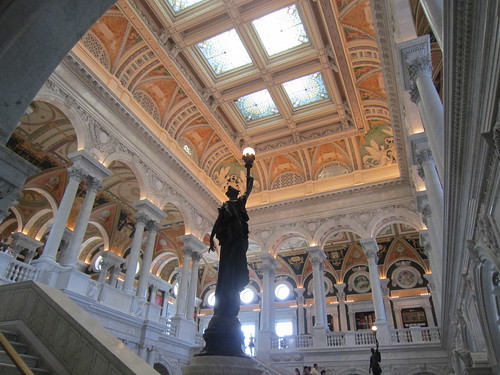
What were the take-aways? I was able to have some of the staff read the ZSR Disaster Plan and COOP Plan and get constructive feedback. A discussion with the Internet Archive manager told me that the standards for digitization are in flux (something we suspected). Digital preservation will be more important as time goes on for all institutions as born digital material accumulates. I learned some easy-to-do techniques for preserving photographs and paper materials and got some great ideas for exhibits. And…..I’m glad I don’t live in Washington!
All in all, it was a very fruitful week.
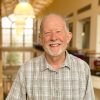
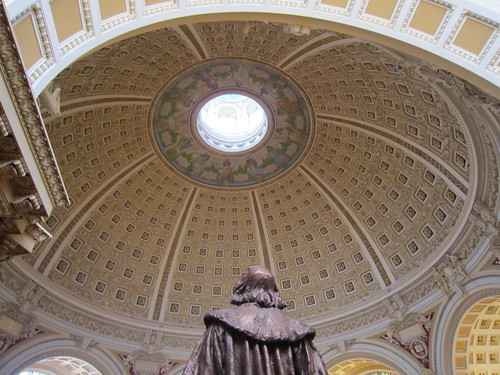
6 Comments on ‘The Preservation Institute at the Library of Congress’
Nice job!
Craig, this sounds like a great learning experience! I have been hearing more about implementation of JPEG2000 as an archival format and I understand it allows for embedded metadata. I’m fascinated by the idea of digital forensics and I think our colleagues in computer science have been investigating this and authentication of records for a while. I worked part of my time as a Junior Fellow at LC in the offsite facility at Fort Meade — it was freezing! Thanks for sharing…I look forward to hearing more!
Great report, Craig! Comforting to hear we share some of the same miseries as LOC with HVAC, etc. In my opinion, the grand rotunda is the only library space in America more beautiful than ZSR’s atrium!
Well done our good and faithful preservationist.
This sounds fascinating–thanks for the detailed report!
Interesting stuff! Thanks for sharing.